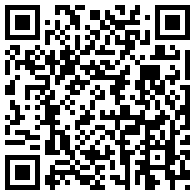Digital innovation is providing new tools with intriguing possibilities for storytelling. At the 2010 Online News Association Conference last weekend, Webbmedia’s Amy Webb presented tech trends she thinks might find a place in the future of news. (Before she founded her own company, Webb covered emerging technology, media and cultural trends for Newsweek and the Wall Street Journal.) Webb mentioned some tools that I thought might be useful in getting your digital storytelling groove on, as well as some that might help you mine material on sources.
2D Barcode/QR code technology isn’t exactly new (see this Nieman Lab post about it from May of last year), but I suspect there are still some new ways to apply it to storytelling. Webb mentioned showing USA Today how to link its online projects to its print stories so readers can scan the code with a mobile device to get related digital content, and she noted the successful use of QR code to expand a targeted demographic at the South Florida Sun Sentinel, which has taken to using the codes on the front page of the paper. For a more playful example, see Webb Media’s game at ONA2010, which used bar codes around the conference hotel, hidden in lobby plants as well as tucked into various presentations across the weekend.
In addition to contest and treasure hunt angles, news organizations’ cultural, historical or events-related narrative projects might link the real and virtual worlds in interesting ways with these codes. They can be a way of getting more information to readers and inviting them to interact while retaining the ability to shape and control their story experience.
For more on QR codes, see Lauren Rabaino's post over at 10,000 words and Webbmedia's tipsheet from 2007.
Dynamic Curation
A number of tools, such as Flipboard, generate magazines or other forms of content for users by drawing on their social networks and pulling together what their friends are linking to and posting about. But curators and storytellers who want to stay in the driver's seat might prefer tools that allow a more active role for users in building narratives, such as Storify (recently discussed on Nieman Lab and on Storyboard).
Data on subjects and users
More and more detailed information about users and their habits will probably influence the ways we tell stories. Webb’s unsettling description of how combining Spokeo with KnowEm can link different usernames with accounts across a wide range of applications -- potentially revealing how @knittinggrannyof3 is also RedHotVixen by night -- will surely help investigative reporters and those looking to tell more complex and complete narratives about real people.
Though this ability to link disparate parts of peoples' lives will aid journalists, reporters may find themselves challenged in other arenas. Webb played a clip from a tool that allows targeted content to be erased from video as it's played (one form of "diminished reality" technologies), bringing the Photoshop arsenal one step closer to reality. Will new technology require nonfiction storytellers to question documentary evidence previously seen as trustworthy? Who are you going to believe, me or your lying eyes?
[For more about ONA 2010, check out some storytelling projects that won awards, and follow Nieman Lab’s session-by-session coverage of the conference.]
2D Barcode/QR code technology isn’t exactly new (see this Nieman Lab post about it from May of last year), but I suspect there are still some new ways to apply it to storytelling. Webb mentioned showing USA Today how to link its online projects to its print stories so readers can scan the code with a mobile device to get related digital content, and she noted the successful use of QR code to expand a targeted demographic at the South Florida Sun Sentinel, which has taken to using the codes on the front page of the paper. For a more playful example, see Webb Media’s game at ONA2010, which used bar codes around the conference hotel, hidden in lobby plants as well as tucked into various presentations across the weekend.
In addition to contest and treasure hunt angles, news organizations’ cultural, historical or events-related narrative projects might link the real and virtual worlds in interesting ways with these codes. They can be a way of getting more information to readers and inviting them to interact while retaining the ability to shape and control their story experience.
For more on QR codes, see Lauren Rabaino's post over at 10,000 words and Webbmedia's tipsheet from 2007.
Dynamic Curation
A number of tools, such as Flipboard, generate magazines or other forms of content for users by drawing on their social networks and pulling together what their friends are linking to and posting about. But curators and storytellers who want to stay in the driver's seat might prefer tools that allow a more active role for users in building narratives, such as Storify (recently discussed on Nieman Lab and on Storyboard).
Data on subjects and users
More and more detailed information about users and their habits will probably influence the ways we tell stories. Webb’s unsettling description of how combining Spokeo with KnowEm can link different usernames with accounts across a wide range of applications -- potentially revealing how @knittinggrannyof3 is also RedHotVixen by night -- will surely help investigative reporters and those looking to tell more complex and complete narratives about real people.
Though this ability to link disparate parts of peoples' lives will aid journalists, reporters may find themselves challenged in other arenas. Webb played a clip from a tool that allows targeted content to be erased from video as it's played (one form of "diminished reality" technologies), bringing the Photoshop arsenal one step closer to reality. Will new technology require nonfiction storytellers to question documentary evidence previously seen as trustworthy? Who are you going to believe, me or your lying eyes?
[For more about ONA 2010, check out some storytelling projects that won awards, and follow Nieman Lab’s session-by-session coverage of the conference.]



